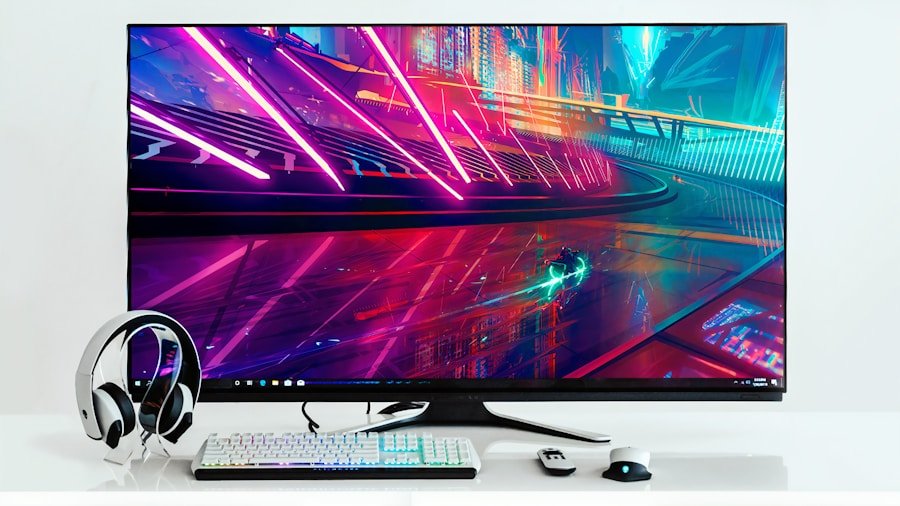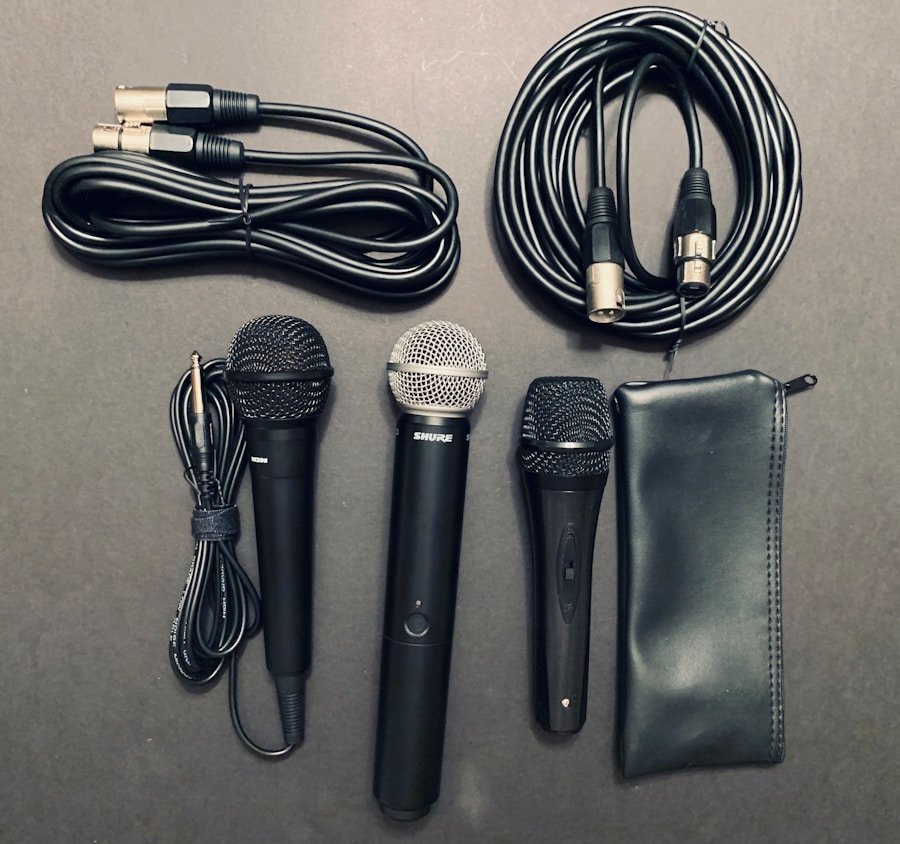Now Reading: Top Gaming Monitors: Enhance Your Gaming Experience
-
01
Top Gaming Monitors: Enhance Your Gaming Experience
Top Gaming Monitors: Enhance Your Gaming Experience

When I first delved into the world of gaming monitors, I quickly realized that understanding specifications is crucial for making an informed purchase. Gaming monitors come with a plethora of technical terms and numbers that can be overwhelming at first glance. However, breaking down these specifications can help me identify what I truly need for an optimal gaming experience.
Key specifications include resolution, refresh rate, response time, and panel technology, each playing a significant role in how games are displayed and how I interact with them. Resolution is one of the most talked-about specifications, as it determines the clarity and detail of the images on the screen. Common resolutions include Full HD (1920×1080), Quad HD (2560×1440), and 4K (3840×2160).
The higher the resolution, the more pixels are packed into the display, resulting in sharper images. However, I also learned that higher resolutions require more powerful hardware to run smoothly, which is something to consider if I’m looking to upgrade my gaming rig alongside my monitor.
Key Takeaways
- Understanding gaming monitor specifications is crucial for making an informed purchase decision.
- When choosing the right size and resolution for your gaming monitor, consider your gaming preferences and available space.
- Refresh rate and response time are key factors for gaming monitors, with higher numbers generally providing smoother gameplay.
- Panel technology, whether TN, VA, or IPS, affects factors such as color accuracy and viewing angles.
- G-Sync and FreeSync are both popular technologies, each with its own benefits, so consider your specific gaming setup and needs when choosing between them.
Choosing the Right Size and Resolution for Your Gaming Monitor
Selecting the right size for my gaming monitor was another important decision I faced. I found that monitor sizes typically range from 24 inches to 34 inches or more. The size I choose can significantly impact my gaming experience, as a larger screen can provide a more immersive experience, especially in expansive open-world games.
However, I also had to consider my desk space and how far I would be sitting from the monitor. A general rule of thumb is that the larger the monitor, the further back I should sit to avoid straining my eyes. Resolution goes hand-in-hand with size.
For instance, a 24-inch monitor at 1080p can look great, but as I move to larger sizes, like 27 inches or 32 inches, I found that a higher resolution becomes necessary to maintain image quality. I discovered that a 1440p resolution is often recommended for monitors in the 27-inch range, as it strikes a balance between visual fidelity and performance. Ultimately, I had to weigh my preferences for size and resolution against my budget and hardware capabilities.
Refresh Rate and Response Time: Key Factors for Gaming Monitors

As I continued my research, I learned that refresh rate and response time are critical factors that can make or break my gaming experience. The refresh rate, measured in hertz (Hz), indicates how many times per second the monitor refreshes the image on the screen. A higher refresh rate means smoother gameplay, which is particularly important in fast-paced games where every millisecond counts.
I found that monitors with refresh rates of 144Hz or even 240Hz are becoming increasingly popular among gamers who want to gain a competitive edge. Response time is another specification that caught my attention. It measures how quickly a pixel can change from one color to another, typically measured in milliseconds (ms).
A lower response time reduces motion blur and ghosting effects during gameplay, which can be distracting and detrimental to performance. I discovered that a response time of 1ms to 5ms is ideal for gaming monitors, especially for genres like first-person shooters where quick reflexes are essential.
Panel Technology: TN, VA, or IPS?
Panel technology is another aspect of gaming monitors that I had to consider carefully. The three main types of panels are Twisted Nematic (TN), Vertical Alignment (VA), and In-Plane Switching (IPS). Each type has its own strengths and weaknesses that cater to different gaming needs.
TN panels are known for their fast response times and high refresh rates, making them a popular choice for competitive gamers. However, they often sacrifice color accuracy and viewing angles. On the other hand, VA panels offer better contrast ratios and deeper blacks, which can enhance the visual experience in darker games.
While they may not have the same response times as TN panels, they still provide a good balance for gamers who appreciate stunning visuals without compromising too much on performance. Finally, IPS panels are renowned for their vibrant colors and wide viewing angles, making them ideal for gamers who enjoy visually rich games or those who may be sharing their screen with friends.
As I explored further into gaming monitors, I stumbled upon G-Sync and FreeSync technologies. Both are designed to eliminate screen tearing and stuttering during gameplay by synchronizing the monitor’s refresh rate with the graphics card’s output. G-Sync is developed by NVIDIA and works exclusively with NVIDIA graphics cards, while FreeSync is an AMD technology compatible with AMD graphics cards.
Choosing between G-Sync and FreeSync ultimately came down to my hardware setup. If I owned an NVIDIA graphics card, G-Sync would be the way to go for a seamless gaming experience. However, if I was using an AMD card, FreeSync would be more suitable.
I also learned that some monitors offer compatibility with both technologies, providing flexibility if I ever decide to upgrade my graphics card in the future.
Design and Ergonomics: Finding the Perfect Gaming Monitor
The design and ergonomics of a gaming monitor are often overlooked but play a significant role in my overall comfort during long gaming sessions. A monitor with adjustable height, tilt, and swivel options allows me to customize my setup for optimal viewing angles and comfort. This is particularly important since I often spend hours immersed in gameplay, and any discomfort can detract from my experience.
Additionally, aesthetics matter too; a sleek design can enhance my gaming setup’s overall look. Some monitors come with RGB lighting or customizable features that allow me to match them with my other gaming peripherals. Ultimately, finding a balance between functionality and design was essential for me as I sought out a monitor that not only performed well but also complemented my gaming environment.
Budget-Friendly Gaming Monitors: Getting the Best Bang for Your Buck

As much as I wanted to invest in a high-end gaming monitor, budget constraints were always a consideration. Fortunately, there are plenty of budget-friendly options available that still deliver excellent performance without breaking the bank. I found that many manufacturers offer solid mid-range monitors that feature decent refresh rates, good response times, and respectable resolutions at more affordable prices.
When searching for budget-friendly options, I learned to prioritize essential features over flashy extras. For instance, while RGB lighting might be appealing, it’s more important for me to focus on specifications like refresh rate and panel type that directly impact my gaming experience. By doing thorough research and reading reviews from other gamers, I was able to find monitors that provided great value without compromising on quality.
Top Gaming Monitors on the Market: Reviews and Recommendations
After extensive research and consideration of all the factors mentioned above, I compiled a list of some top gaming monitors currently available on the market. One standout option is the ASUS ROG Swift PG259QN, which boasts an impressive 360Hz refresh rate and 1ms response time—perfect for competitive gamers seeking every advantage possible. Its G-Sync compatibility ensures smooth gameplay without tearing.
Another excellent choice is the Dell Alienware AW2521H, featuring a stunning IPS panel with vibrant colors and a 240Hz refresh rate. This monitor not only delivers exceptional performance but also offers an aesthetically pleasing design that fits well in any gaming setup. For those on a tighter budget, the AOC CQ27G2 is worth considering; it provides a solid 1440p resolution with a 144Hz refresh rate at an affordable price point.
In conclusion, selecting the right gaming monitor involves careful consideration of various specifications and personal preferences. By understanding what each feature means and how it impacts my gaming experience, I’ve been able to make informed decisions that enhance my overall enjoyment of video games.
If you’re looking to enhance your gaming setup beyond just monitors, you may want to check out this article on must-have gamer gear for 2025. This list includes everything from gaming chairs to accessories that can take your gaming experience to the next level. It’s always important to have the right equipment to fully enjoy your gaming sessions, so be sure to explore all the options available to you.
FAQs
What are the key features to look for in a gaming monitor?
Key features to look for in a gaming monitor include high refresh rates (at least 144Hz), low response times (1ms is ideal), adaptive sync technology (such as G-Sync or FreeSync), and a high resolution for sharp visuals.
What is the ideal screen size for a gaming monitor?
The ideal screen size for a gaming monitor is typically between 24 to 27 inches. This size provides a good balance between immersion and visibility without sacrificing desk space.
What is the importance of refresh rate and response time in a gaming monitor?
Refresh rate and response time are crucial for gaming monitors as they directly impact the smoothness and responsiveness of gameplay. A higher refresh rate (e.g. 144Hz or 240Hz) allows for smoother motion, while a lower response time (e.g. 1ms) reduces motion blur and ghosting.
What is adaptive sync technology and why is it important for gaming monitors?
Adaptive sync technology, such as G-Sync for Nvidia graphics cards and FreeSync for AMD graphics cards, helps to eliminate screen tearing and stuttering by synchronizing the monitor’s refresh rate with the GPU’s frame rate. This results in a smoother and more immersive gaming experience.
What are some popular gaming monitor brands known for their quality and performance?
Some popular gaming monitor brands known for their quality and performance include ASUS, Acer, BenQ, LG, and Samsung. These brands offer a range of gaming monitors with various features to cater to different gaming preferences.




























Pingback: How to Choose the Right Gaming Mouse for Your Playstyle
Pingback: Best Gaming Apps for Mobile: Console-Quality Games in Your Pocket